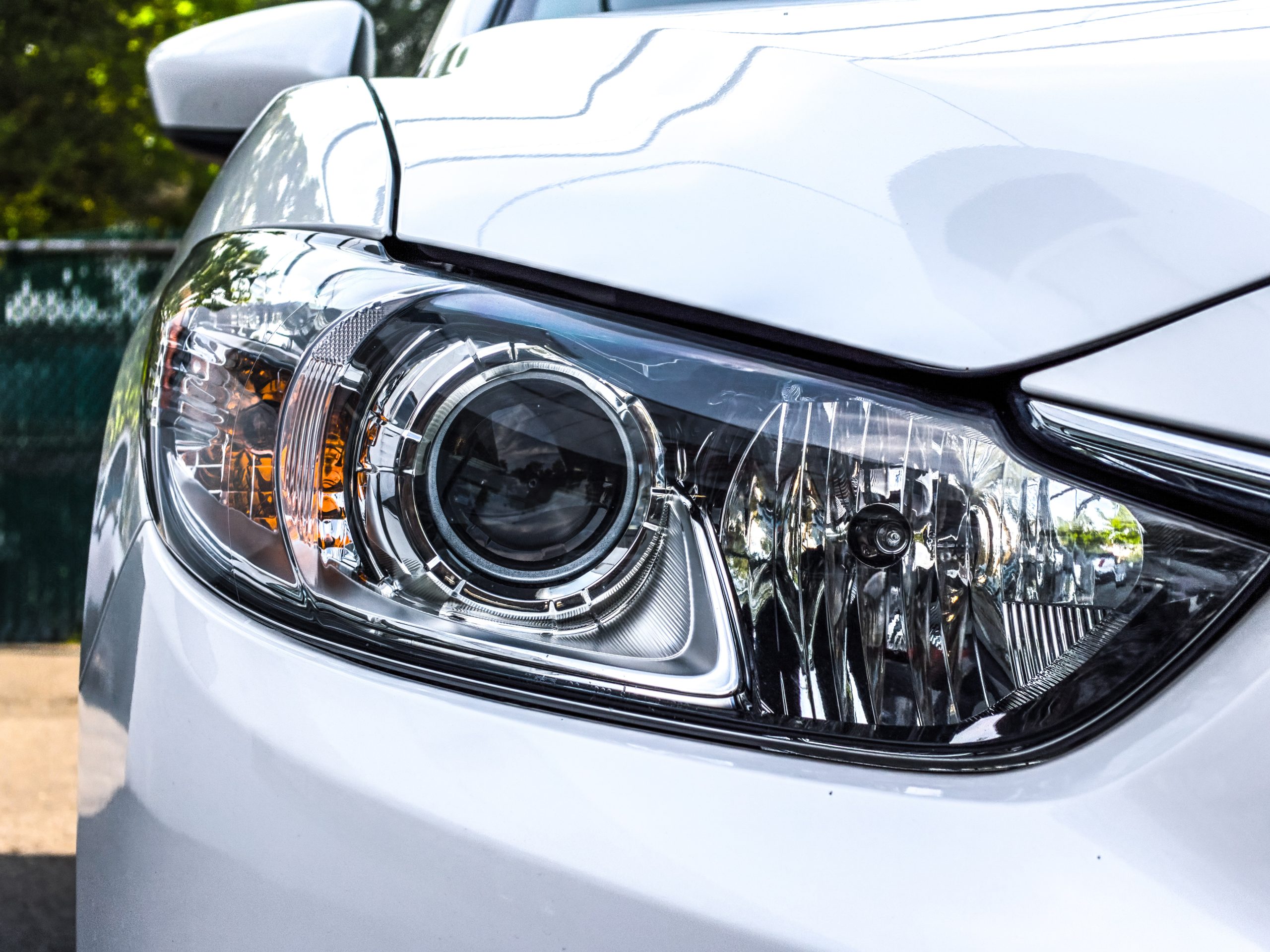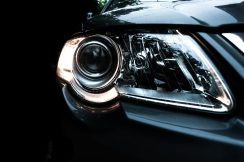The question as to which headlight housing design, projector vs. reflector, is superior is a question that comes up a lot. On car lots today worldwide, you’ll find new vehicles equipped with both reflector headlights and projector headlights. Some even use both in one headlight. There must be some logic behind all of this madness, right? Some kind of justification for using one or the other. We’re going to settle this once and for all. Projector vs. reflector headlights, which is best?
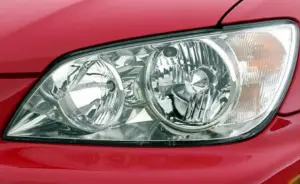
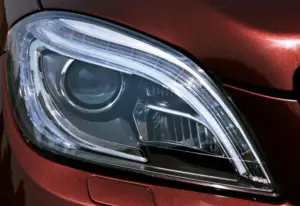
VS
And the winner is… Projector headlights. Let us explain.
Criteria for Picking the Best Headlight Design
In order to pick a winner, we first needed to define what “best” means. “Best” is highly subjective, so here is how we represent “best.”
Most people that are asking the question, “Which is better, projector or reflector headlights?” want to know which design accomplishes the job of a headlight the best. In other words, which design provides the best experience for both the driver and oncoming traffic?
With that in mind, we analyzed each headlight design in detail.
How Projector Headlights Work
Projector headlight uses a very simple design. In its the most basic form, there are three parts:
- Reflector
- Lens
- Light source (halogen bulb, HID, or LED)
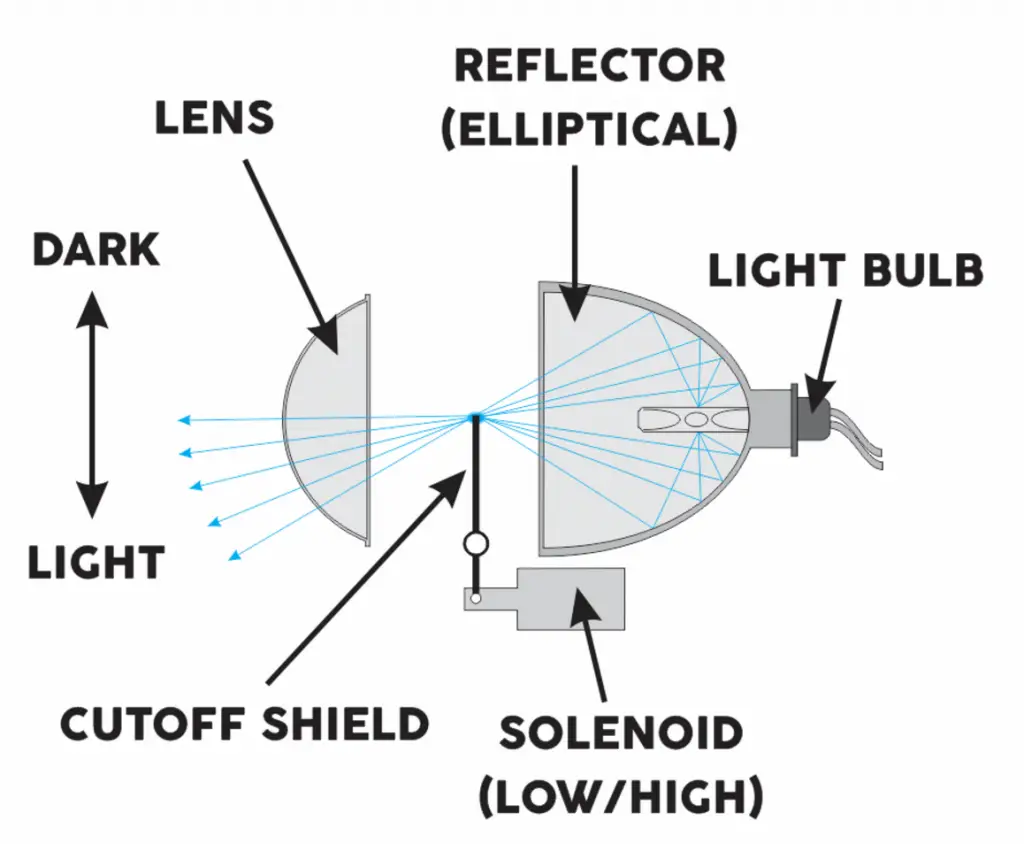
The reflector portion is similar to what you see in a flashlight. It’s a reflective half-sphere that throws the light from the light source in a specific direction.
The lens bends, spreads, or concentrates the light. The distance the light source and reflector are from the lens determines the light’s intensity and dissipation or concentration.
Pro Tip: in all cases, a quality headlight protection film will keep your headlights looking new for years to come. A clear headlight housing allows more light to exit and onto the road ahead.
Similar to a Magnifying Glass
An easy way to wrap your head around this is to compare this to a handheld magnifying glass. If you’ve ever been 9 years old, you know that you can have some fun when you take a magnifying glass outside on a sunny day. If you line things up just right with the sunlight and a dry leaf, the magnifying glass lens will concentrate the sunlight to a fine point, and the leaf will begin to burn and smoke. If the magnifying glass is held too closely or too far away, the light spreads, and the leaf doesn’t burn.
This is how projector headlights work. The lens is used to throw the light very precisely and evenly. The headlight manufacturers tune the headlights so that you get an exceptional experience.
The Cutoff Shield
The cutoff shield creates a distinct light barrier so that the light coming out of the headlight is concentrated out and down, and keeps the light from exiting out and up, which would blind oncoming traffic. You’ll probably recognize this, but here is a shot of the distinct barrier that a cutoff shield produces:
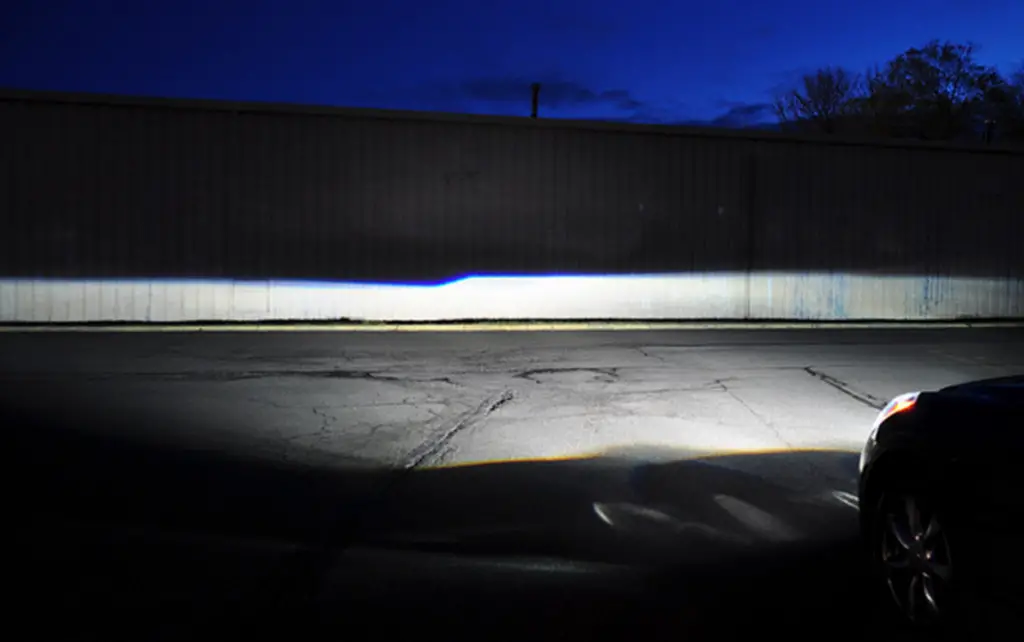
The Solenoid
You’d get around light output shape without the cutoff shield, similar to a flashlight. This leads me to the next component of the headlight, which is the solenoid. The solenoid controls the high and low beams. The cutoff that you see above is for the low beams. When the high beams are engaged, the solenoid drops the cutoff shield out of the way allowing all of the light the pass through, giving you full light output, or in other words, your high beams.
Pros & Cons of Projector Headlights
Pros:
- Even distribution of light with little to no “hot spots” or intense and weak spots.
- Distinct cutoff of low beams, which keeps oncoming traffic from being blinded.
- Because of the distinct cutoff, projectors can handle a brighter headlight bulb, namely high-intensity discharge (HID) bulbs. A brighter headlight bulb provides a better night driving experience.
- The projectors look awesome.
Cons:
- The light output looks different than that of a reflector headlight. Most like it or prefer it, but there are some that don’t. It’s a matter of opinion. You’ll have to make that call yourself.
How Does a Reflector Headlight Work?
The reflector headlight uses an even more simple design. It consists of a light source (headlight bulb) that is situated in the middle of the reflector cup. Here is a cross-section of that design:
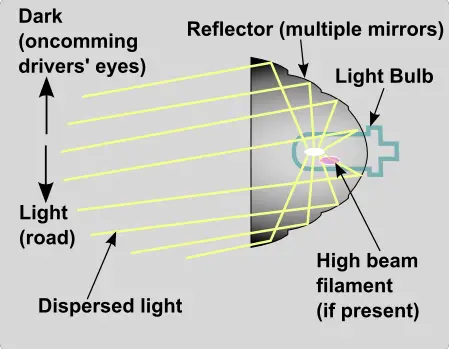
Pros & Cons of a Reflector Headlights
Pros:
- Simple design. Less expensive to manufacture
Cons:
- Light output is less controlled, and the low beam cutoff for oncoming traffic is less distinct.
- Because the light output is less controlled, high output light sources are not used with this design. Most reflector headlights use a halogen bulb which puts out less height than an HID.
- The beam often has intense and weak spots in the beam.
Projector vs. Reflector Headlights: Conclusion
It’s clear that the projector headlight is superior for low beams especially. The even beam, its ability to handle an HID bulb, and its appearance all contribute to making the projector headlight design superior to that of the reflector headlight bulb.
If your vehicle doesn’t come equipped with a projector headlight, the aftermarket likely offers a replacement headlight with a projector in it for $200 or $300.

